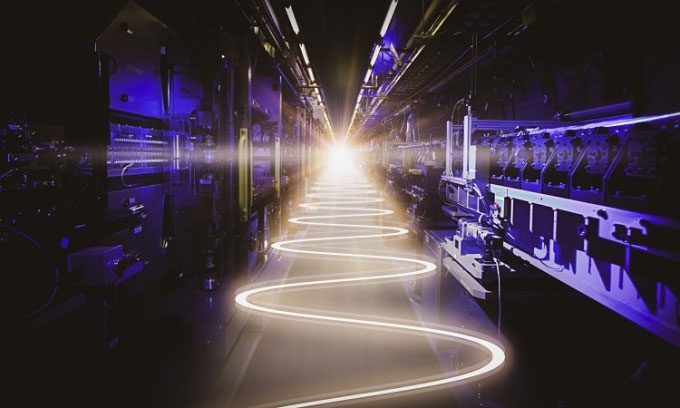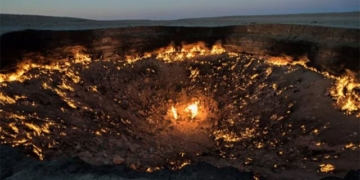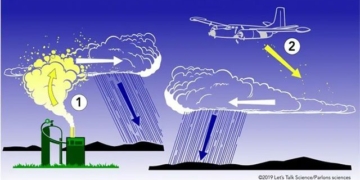The world’s most powerful laser at the SLAC National Accelerator Laboratory will generate X-ray pulses for various research fields.
The X-ray Free Electron Laser (XFEL) at the upgraded Linac Coherent Light Source (LCLS) facility at the SLAC National Accelerator Laboratory, part of the U.S. Department of Energy (DOE), has successfully produced its first X-ray pulse. This achievement is the result of a series of important milestones that began in 2010 as part of the upgrade project involving thousands of scientists, engineers, and technicians from the DOE and partner institutions. The upgraded version, known as LCLS-II, will provide unprecedented capabilities, ushering in a new era in X-ray research, Phys.org reported on September 18.

The X-ray Free Electron Laser (XFEL) generates its first X-ray pulse. (Photo: Greg Stewart/SLAC National Accelerator Laboratory).
The LCLS produced its first X-ray pulse in April 2009. The electron accelerator along the copper tube operates at room temperature, generating 120 X-ray pulses per second. The upgraded LCLS-II elevates X-ray science to a new level with one million X-ray pulses per second, generating a continuous X-ray beam that is on average 10,000 times brighter than its predecessor, setting a world record for the fastest and most powerful X-ray light source. This achievement involved contributions from researchers across multiple institutions, including five national laboratories and a university in the U.S.
The new superconducting accelerator of LCLS-II consists of 37 cryogenic modules operating at -271 degrees Celsius, designed and built in collaboration with Fermilab and the Thomas Jefferson National Accelerator Facility. This accelerator works in parallel with the existing copper machine, capturing detailed images of extremely rapid processes, collecting data in shorter timeframes, and significantly increasing the number of experiments that can be conducted at the facility. In addition to the accelerator, LCLS-II is equipped with many advanced components, including a new electron source, two cryogenic systems for the niobium structures in the cryogenic chamber, two undulators that generate X-rays from the electron beam, ultra-fast data processors, high-end sensors, and detectors.
Researchers have prepared for years to utilize LCLS-II to address previously unattainable challenges. Through imaging chemical reactions that occur in a millionth of a second, LCLS-II will provide new insights into biological and chemical reactions, leading to more efficient processes across various industries, from renewable energy and fertilizer production to greenhouse gas reduction. The X-ray pulses generated by LCLS-II will enable scientists to track energy flows through complex systems in real-time.
Fields such as physics, chemistry, engineering, and materials science will also significantly benefit from LCLS-II. The ability to observe internal structures and material properties at atomic and molecular scales with the X-ray laser will lead to breakthroughs in designing new materials with unique characteristics, impacting a wide range of industries from electronics to energy storage and aerospace engineering.




















































